A spinster is a woman who reaches old age without marrying or having children. In medieval Europe, the spinster was sometimes accused of being a witch. The witch is a pre-Christian archetype, present both in Judaism1 and Greek paganism,2 who remains unnaturally young or retrieves her youth by sacrificing younger women.3 The accusation of “witchcraft” is an attack by younger women against the control of older women. Alternatively, witchcraft is part of a pre-Christian tradition of chthonian shamanism.
Witch Burning
It is commonly held that witch-burning was an attempt by the Christian patriarchy to kill “uppity” women. This is the opposite of the truth. Witch burning was a pagan practice which Christians attempted to stop, which only re-emerged in the chaos of authority and moral panic of Puritan New England. Witch-burning was instigated by superstitious gossip and nagging. It was a female-on-female crime. Christian kings and Bishops fought against this practice for 1,000 years.
In Italy, the Lombard Code (Edictum Rothari) of 643 AD states:
"Let nobody presume to kill a foreign serving maid or female servant as a witch, for it is not possible, nor ought to be believed by Christian minds."
In Germany, the Council of Paderborn (785) established that a belief in witches was a pagan belief. Pagans would accuse women of being witches, and burn or even eat them as a part of human sacrifice.
In Ireland, "an Irish synod at around 800 AD condemned the belief in witches."4
In France, Archbishop Agobard of Lyon (769–840 AD) wrote:
"People overcome with.. foolishness, made crazy by.. stupidity,.. say that there is a.. region,.. called Magonia, from which ships come in the clouds. In these ships.. crops that fell because of hail.. are carried back into [Magonia];.. aerial sailors make a payment to the storm-makers, and take the grain and other crops... Those so
blinded with profound stupidity.. believe these things could happen.. [Foolish peasants have been] exhibiting four captives, three men and one woman, as if they had fallen from these very ships... they exhibited these four,.. chained up for some days,.. assembling in our presence, as if these captives ought to be stoned. But when
truth had prevailed, however, after much argument, the people who had exhibited the captives,.. were confounded…"
In Scandinavia, the Pope made it a point to attack the pagan belief in witches among the recently converted Norse:
"In 1080 Harold of Denmark was admonished not to hold old women and Christian priests responsible for storms and diseases, or to slaughter them in the cruelest manner. Like Agobard before him, Pope Gregory VII declared in his letter to the Danish king that these catastrophes were caused by God alone, that they were God's punishment for human sins, and that the killing of the innocent would only increase His fury."5
King Coloman of Hungary, in Decree 57 of his First Legislative Book (1100), said, "let there be no question of a witch, for there are none."6
It is very clear the during the process of Christianization in Europe, from the 7th to the 12th century, Christian Kings and Bishops attempted to stamp out the practice of scapegoating and persecuting “witches.” Christians did not believe in witches and had no desire to persecute them.
Witch-hunting is pagan scapegoating, akin to the Jewish practice of sacrificing goats, chickens, and bulls; or Druidic and Mayan human sacrifice. It is a pagan practice to hunt witches, not a Christian one.
The Salem Witch Trials
The Salem Witch trials were started by women to persecute other women. Specifically, pagan slaves and little girls were the main accusers in the Salem Witch trials.
Elizabeth “Betty” Parris (age 9), Abigail Williams (age 11), were taught by Tituba, a pagan slave, all about native American beliefs in witches. Tituba was accused of witchcraft by Elizabeth and Abigail, who then started to accuse others such as Sarah Good and Sarah Osborne. Tituba told elaborate stories about pizza-gate style rituals. She was later released while the women she accused were slain. Ann Putnam, a 12 year old girl, accused more than 60 people of being witches. 17 year old Elizabeth Hubbard accused 29 people, 13 of whom were tragically executed. Mary Walcott, a 16 year old girl, caused the executions of 16 people. 19 year old Mercy Lewis accused nine people of witchcraft.
When 20 year old Mary Warren started to join the moral panic against witches, she was finally opposed by a brave and noble patriarch, John Proctor. John Proctor, a rich man and paragon of virtue, attempted to stop this hysterical, malicious slander. For his heroic actions, he was accused of witchcraft by a gaggle of women and killed. Warren later admitted that all the girls involved were lying and going into hysterical fits just to get attention. They would speak in tongues, tear at their clothes, run around screaming, all while pretending to be under the spell of a witch. They enjoyed the power of being able to accuse people and get them killed, for fun. They were narcissistic control freaks.7 These little girls and young women lied in order to destroy the lives of the innocent.
These superstitious beliefs in “witchcraft” are reminiscent of modern day witch-hunts against white supremacy. Just as 1,000 years ago, magical airships were said to rain down hail, and then swoop down and steal the fallen crops, today, white supremacy is responsible for “stealing philosophy from Africa” or causing black on Asian crime. Mathematics is secretly infected by white supremacy.
The Original European Religion
If Christians tried to stop witch burning, then was witch burning the original religion of Europe, rather than witchcraft itself? In other words, was pre-Christian Europe pro-witch or anti-witch? This question can only be resolved by differentiating between two periods of Europe: pro-witch, and anti-witch.
Pro-witch Europe represents the period from 6,000 BC to 2,500 BC, when Europe was dominated by agriculturalists from the Middle East. Anti-witch Europe represented the period after 2,500, when Indo-Europeans began to invade and put a stop to the witch cult. This progression is encoded in the contradictory mythological layers of Greek religion.
The Four Layers of Greek Myth
Greek religion has four mythological levels: Apollonian, Olympian, Urantian, and Titanic.
The Apollonian is represented by the youthful God, the bachelor, the unmarried adventurer. The Apollonian typifies the Greek heroes, including Jason,8 Herakles, Odysseus, and Achilles. They are all free, independent, not tied down to a particular geographical location, but who wander the world in conquest.
The second layer, Olympian, is represented by Zeus, the humanistic sky father. The name Zeus derives from Zeus (Deus), and in Latin it is Jupiter, or Dyu-Pater. In Sanskrit it is Devas. The names Zeus, Dyus, Devas, Diwos, and Dewos all point to an original Indo-European God, “Zdyevus.” This Zdyevus was, like Apollo, a God of the sun and the daylight, a chariot rider, eternally young.
Due to Afro-Asiatic influence, however, Zdyevus was syncretized with the “old man” God, worshipped in the Middle East. By the time of the Illiad (850 BC), this syncretization was complete, leaving us with only depictions of a bearded Zeus. The original myth of Zeus, however, depicts him as a boy struggling against his father.
The third layer of Greek myth is the Urantian, the primordial or "pre-conscious" God of rain and storms. Uranus, as a rain God, is inherited from farming cultures in Anatolia, possibly related to Semitic, Hurro-Urartian, or Sumerian cultures.
The fourth layer of Greek myth is the Titanic, which represents the elemental and chthonian aspect of farming culture. Hades and Poseidon share aspects with these Titanic forces, since Pluto was the God of earthly wealth, and Poseidon was God of earthquakes. It should remember that these Gods are syncretic, and not “pure”: they are composite forms mixed from different traditions. Accordingly, Poseidon is also God of horses, which is clearly an Indo-European invention.
Each of these layers represents cultures in various stages of syncretism. Apollo represents the Indo-European steppe culture, with its high levels of individualism. Apollo has relatable, human traits — he is a person rather than a mysterious primaeval force.
One of Apollo’s primary traits is dragon-slaying, as depicted in the myth of the slaying of Python. Apollo’s Olympian family has a series of sons who all slay dragons, the Medusa, and other serpentine or worm-like creatures. Typhon, the husband of the snake-goddess Echidna, is slain by Zeus; Cadmus slays the water dragon (dated by the Greeks to 2000 BC); Perseus slays the Gorgon Medusa and Cetus (d. 1350 BC); Herakles slays the Hydra as well as Ladon (d. 1300 BC). Bellerophon, son of Poseidon, rode Pegasus as he slay the Chimera, which was a mixture of a lion, goat, and serpent.
While “Cetus” in English refers to a specific sea-dragon in the myth of Perseus, ketos (as used by Apollodorus) refers to a general class of sea-serpents or sea-dragons. Odysseus encountered the ketos in the form of the Scylla, as well as the snake-like female Charybdis. Charybdis also threatened Jason and his Argonauts. Jason’s last obstacle to obtain the Golden Fleece was the Colchian dragon.
These sons or princes would kill beasts in order to save a princess. In the case of Perseus, this princess was Andromeda.
The Greeks associated the worship of dragons with foreign tribes. For example, the worship of the Cetus slain by Perseus was said by Apollodorus to be compelled by a tribe of Ethiopians.9 In almost exactly the same fashion as Perseus and Andromeda, the princess Hesione was tied down to rocks near the sea by her father Laomedon at the command of religious authorities, khresmon (χρησμῶν), translated as “oracles.”10 Herakles slays the ketos (κῆτος, κήτει).
These legends of sky Gods slaying dragons, worms, and serpents also have parallels in Egyptian and Sumerian mythology. For the Egyptians, the God who would devour sinful souls was the dragon-faced Ammit, and every night the God Apep or Apophis would attempt to swallow Ra. For the Sumerians, the myth of Marduk slaying Tiamat is closer to the Greek, because in this legend the dragon is slain rather than being eternally warded off.
The distinction between a “warding off” and a “slaying” could be a metaphor for “constant ethnic conflict” as opposed to “repelling an invasion” or “genocide.” If the serpent-cult represents an actual culture or religious group, then the Egyptian myth of “constant battle with the serpent” implies that the serpent cult either existed within Egypt, or adjacent to Egypt, and was never entirely overcome.
By contrast, the Greek myth of “slaying the serpent” represents a total extermination or defeat of a foreign tribe. That said, Greek myth also does not represent the serpent cult as geographically foreign, but depicts it as being native to Pelasgian and Trojan religious authorities.
“Homer” as a Snake Cultist
During the Trojan War, Laocoön argues to his fellow Trojans that they should not accept the Trojan horse. As punishment, Athena, Poseidon, or even Apollo sent two giant serpents to kill him and his sons. The Trojans are depicted as Indo-European, due to their love of horses. It is due to the lies of the Greeks, and the power of the serpent cult, that Indo-European wisdom is defeated and subverted. This interpretation requires a layered or syncretic approaching, viewing the Iliad as a composite myth, drawing simultaneously from multiple religious traditions.
Ethnically and linguistically, the Greeks were Indo-Europeans themselves. How is it possible then that the Trojans were depicted as more Indo-European than the Greeks? This could be explained if the writer of the Iliad (said to be Homer, but more likely a team of priests) was non-Greek. Similarly, 800 years later, Jews would write the New Testament in Greek, using the Greek language to propagate Hebrew mythology.
This is not to imply that the Greek population at that time was not Indo-European. Instead, the Iliad myth represents an evangelical injection of Middle Eastern culture into Greek culture, which, like Christianity, was adopted uncritically and later become an integral part of Greek civilization, in the same way that Christianity is now an integral part of western civilization. Pre-Homeric Greeks and post-Homeric Greeks can be differentiated in the same way as pre-Christian Romans and post-Christian Romans.
The Egyptian myth of a constant struggle between sun-cult and serpent-cult implies that Egyptian culture never resolved the inner tension between these two religious modes. On the other hand, the pre-Homeric Greek myth of a traveling hero who comes upon a ritual of human sacrifice and ends it is indicative of the more complete conquest of Hellas by invading pre-Homeric Greek pastoralists. However, large-scale trade with the Middle East and migration into Greece after 1600 BC may have led to a revival of the spirit of the snake within Greece. This is represented in the Iliad by the death of Laocoön, as well as the “sign of the snake.” A "blood red" snake bits an eagle, defeating it, and this is an omen of the defeat of the people of the eagle (Indo-European Troy) by the people of the snake (the priests of Homer operating within Greece).11
An Aside on Revivalism
The revival of the snake cult in Europe can be viewed as similar to the Christian revivals of Europe, which sought to “return to the original tradition.” A brief timeline will be provided to illustrate the ways in which a religion can remain “underground,” and then during times of crisis, “revive.” This is similar to the biological processes by which seeds and cicadas re-emerge after periods of dormancy.
1074: Gregory VII launches a fanatical attack on Bishops who allow priests to marry.
1274: Scholasticism, represented by Thomas Aquinas, reaches its peak with the Summa Theologica. Scholasticism was an exhaustive attempt to resolve the obvious and glaring problems in the church, especially as regarded the conflict between philosophy, science, and scripture.
1341: Petrarch becomes Europe’s first poet laureate since the fall of Rome; a revival of Roman paganism.
1382: Wycliffe's Bible first appears, undermining the primacy of Latin.
1415: Jan Hus, the first Reformer, is burnt at the stake, ushering in the Hussite Wars.
1517: Luther publishes the Ninety-five Theses.
1649: Execution of Charles I during the English Civil War.
1689: The Glorious Revolution ends Catholic rule in England; meanwhile, the Boston Revolt foreshadows the American Revolution.
1738: George Whitefield, founder of the Methodist church, travels to America, as part of the “First Great Awakening.”
1765: The Sons of Liberty is founded, led by Freemasons such as Samuel Adams, Paul Revere, and Matthew Phripp.
1830: Joseph Smith forms the Mormon Church in the “burned over” district of western New York. This is part of the "Second Great Awakening," alongside Adventists, Spiritualists, Shakers, and other utopians. This period also saw a dramatic increase in feminism, and prohibitionism, abolitionism, leading to the Civil War. Karl Marx attended high school during this period, where his headmaster, Johann Hugo Wyttenbach, would help to shape the views later expressed in the 1848 Communist Manifesto.
1879: Charles Russell starts the Jehovah's Witness magazine, "Watchtower," and helps to found Christian Zionism. Russell innovated the (at that time) shocking Christian teaching that Jews should not convert to Christianity, but should migrate to Palestine to fulfill the promises of the Bible. This can be considered the fruit of the “Third Great Awakening.” 1879 is also the year when Henry George writes "Progress and Poverty," which is massively popular and helps inspire the economics of the Progressive Movement.
1948: Billy Graham issues the "Modesto Manifesto" in the lead up to the Campus Crusade movement. This could be considered the “Fourth Great Awakening, which led to the decline of mainline churches in favor of Pentecostal, Evangelical, and non-denominational churches. This fed into the Civil Rights Movement, as Graham was good friends with MLK.
1978: The Boston riots against bussing end, ushering in a “post-racial America.”
2007-2011: Tumblr is created along with other social media platforms (Facebook, Instagram, Snapchat, Youtube, Twitter, Reddit). These platforms serve to facilitate transgender visibility and Black Lives Matter. This has been termed, sarcastically, the “Great Awokening,” but can be less pejoratively termed as the “Fifth Great Awakening.” Unlike previous Awakenings which led to greater church attendance, the Fifth Awakening correlates with a decline in church attendance.
The God Glycon came to be worshipped around 160 AD in the Roman Empire. This can be seen as a revival of ancient snake cults which were destroyed by the Indo-Europeans.
The Garden of Eden
In Jewish mythology, the serpent in the Garden of Eden may symbolize a pre-Egyptian, pre-Sumerian snake cult which was recognized by the Greeks as the lowest level in their cultural hierarchy. This snake communes with Eve rather than Adam, indicating a connection between the feminine and the serpentine. Jewish mythology places the snake and the female in cooperative dialogue, whereas Greek mythology fuses these together into a single entity (as in Medusa and Echidna). Judaism is not the only religion to use snakes to guard divine fruits: the Greek Ladon guarded the golden apples in the Garden of the Hesperides.
The Greek name Ladon seems related to the Ugaritic (Semitic) name Lotan, meaning "coiled one." Lotan is a servant of the sea God Yam, and is slain by the storm God Hadad-Ba'al.
In the Bible, Yahweh slays the dragon Leviathan, and this seems to be an adaptation of Hadad’s slaying of Lotan.12 Hadad's chieff animal was the bull, which in Greece was most closely associated with Zeus and Apollo (and later Mithras). Hadad held a club like Herakles, and wielded thunderbolts like Zeus. The Romans interpreted Hadad as being equivalent to Jupiter in the cult of Jupiter Dolicenus. Hadad was known in Akkadian as Rammanu, the thunderer, similar to Thor or Indra.
In the New Testament, Jesus counsels his followers to be as innocent as doves, but as wise as serpents. In the case of the Genesis myth, the serpent tempts Eve to gain knowledge, and Jesus reaffirms the connection between the serpent and feminine religious knowledge.
The Feminine Snake
Why would ancient peoples connect serpents together with knowledgeable women? I will present three possible explanations:
Anatomy;
Poison;
Sexuality.
Anatomy
Firstly, anatomically, snakes have no arms or legs. To this day, the term "arms" is synonymous with "weapons." With the exception of the mythological accounts of the Amazons, or the divine depictions of Artemis and Athena, women were "armless" or weaponless. The ability of women to cause harm is limited to their words, proceeding from their mouth. Therefore, the snake, which has no arms, but which causes harm by its mouth, parallels the woman. Furthermore, snakes are “curvy,” and this might relate to the “curves” of a woman. The belly dancing of Anatolia and Asia seems to replicate this connection between the female body and the snake.
Poison
Secondly, snakes are known throughout Eurasia to be poisonous. This poison has multiple possible effects: death, sickness, and psychosis. The ability of women to make men crazy, lovesick, mad, or emotionally disturbed is represented by the myth of Herakles. Herakles, due to the jealousy of Hera, is "cursed" (poisoned) with madness, which causes him to kill his family. The witch's brew or potion is most often a poison used to kill, and less often it is a love potion used to induce passion.
Sexuality
Thirdly, snakes have a connection to Dionysian or Maenadic orgies due to their sexuality. Rather than pair bonding, snakes form large, indistinct piles, and mate collectively rather than individualistically. Male sexuality, by contrast, is directed, focused, visual, distinct, and Apollonian. Men are attracted to the "still life," they "objectify" women, as in the myth of the Greek sculptor Pygmalion. Men prefer women who are adorned, dressed up, and decorated. In the myth of Daphne and Apollo, Apollo takes the form of a hunter, chasing a woman as if she were a deer. Daphne escapes pursuit by turning into a tree, by becoming frozen and stationary.
Despite the collectivistic nature of serpentine sexuality, the daily life of serpents can be solitary and lonely. This is the final inversion of the ideal woman from the Olympian perspective. The Greek woman was meant to be socially integrated, but sexually pure. By contrast, the snake is socially isolated, but sexually orgiastic.
In male sexuality, the desire of the man is predatory, and seeks the capture of a woman. The end goal of the man is to immobilize the woman, to control her, and to exert power over her. In this respect, the snake represents the foiling of the male predatory instinct, because of all animals, the snake is the most difficult to capture, to hold, to control, to prevent its escape. The worm or snake slithers away, it is slimy, it has neither end nor beginning, it is formless and impossible to grasp.
Related to this is the practice of snake charming, where a charmer uses music to domesticate and manipulate a snake. This bizarre art is difficult to explain scientifically. Why do snakes respond passively and positively to music? What evolutionary reason is there for a snake to be controlled by a flute? The use of the flute itself is phallic. The ritual of snake charming, whatever its origin, is a perfect metaphor for the charming of women by the use of music.
The Scorpio and Spider
In Babylonian astrology, the "femme fatale" is represented by the scorpion, which shares many qualities with snakes, including venom or poison which induces death or psychosis, social isolation contrasted with sexual collectivism, and the shedding of skin. Coincidentally or not, the season for Scorpio also corresponds roughly with the Autumnal Equinox, which was the original date of All Hallows Eve, from which our modern Halloween descends.
In the Tanakh, the Witch of Endor displays the Sigma Female's power to commune with the dead. The original concept behind the Autumn Solstice was that the divide between the world of the living and the dead was thinnest at this point in the year. The connection between the Babylonian Scorpio, the serpent archetype, Halloween and witches is fairly clear. In the modern celebration of Halloween, serpents and scorpions are not prominent, given the lack of both in England and New England. However, spiders feature prominently as an appropriate substitute for a creature which is poisonous, socially isolated, and sexually collectivistic. In popular Anglo-American culture, both Charlotte's Web as well as Tolkien's Shelob establish the spider as a feminine creature, akin to the snake.
The Sigma Female Cult
It is clear that among the Babylonians, Hebrews, Greeks, and Anglo-Saxons that snakes were regarded as representatives of Sigma Females, which were dangerous, heretical, demonic, or satanic. All of this was established prior to Christianity, but this was adopted wholesale into the Christian mythos.
Modern "Wiccan" reconstructions of paganism fail to distinguish between "anti-Christianity" and authentic paganism. Part of the failure (whether accidental or intentionally deceptive) is due to the inability to distinguish between Indo-European religon, with its myths of dragon slaying, and earlier chthonian snake cults.
Were there truly ancient cults which worshipped nasty creatures like snakes, spiders, and scorpions? Or were these simply parodies or “scapegoats” to be attacked in witch burnings? It is clear that propaganda has been used throughout history to demonize “heretics”: legends of the Black Mass, Protestant accusations that Catholics worship the devil, the Blood Libel against Jews, and modern day Pizza Gate.
The Scapegoat Hypothesis
The Scapegoat Hypothesis identifies snakes, scorpions, death, orgies, the Fall Equinox, poison, psychosis, death, ghosts, and the archetype of the Sigma Female as entirely negative phenomena. That is, just as human beings have an instinctual fear of heights or an instinctual disgust for disease and human waste, all of these things are instinctually disgusting or fearful for men.
These mythic archetypes show up in many different cultures, ranging from Britain to Babylonia, not because there was ever a previous "snake cult" which became mythologized, but because instinctually, men integrated their deepest fears into man-made myths, where they "slay the dragon." The Scapegoat Hypothesis is similar to modern atheistic explanations for the origins of human religion as a means of calming existential fears. Men fear death, and they invent heaven or salvation or a loving father God in order to calm their existential fears.
Another “scapegoat” theory, put forward by Stanislav Grof in his theory of Holotropic Consciousness, is that, building on Jung, there are certain forms of imagery which are universally associated with the painful process of birth. Grof believes that it is possible for the fetus to develop and maintain memories, which later re-emerge in life. The parallel between the birth process and human mythology is known as a “COEX system,” where fetal trauma recurs throughout a person’s life in an attempt to heal that initial trauma. The fear of snakes as something wet or primordial might refer to a fear of the womb, since the fetus resembles a snake or worm in its earliest form. Additionally, the threat of being strangled by the umbilical cord could relate to the threat of being constricted by a snake.
The Historical Hypothesis
The Historical Hypothesis suggests there was a very real "snake cult" spread throughout the ancient world. The frequency of the snake cult, scorpion cult, or spider cult is not the projection of an instinctual "collective unconscious" in an irrational sense, but it is an actual historical memory.
Are dragons real, or are they a collective fantasy rooted in our instinctual, irrational fear of lizards? Almost every culture has a myth of dragons, so it is difficult to view dragons as parochial, random, or "made up" in a memetic sense.
An Aside on Music!
A deeper, but related question: what makes music good? Is music good because of random cultural mutation? Some people like metal, others rap, others classical — some claim to like every genre, while some claim to prefer one and hate the rest.
It is clear that music becomes popular and well liked, not merely because of some Pythagorean adherence to a golden ratio, but simply through repetition and association with the social center. Between ages 11 and 15, pubescent teenagers come to strongly identify with music, not as a result of any special musical training or understanding of music theory, but as a result of their raging hormones and obsession with what is cool, popular, and fashionable.
This is the period of life, more than any other, when humans find themselves desperate to integrate into a tribe, or else take on the resentful, ironic, angsty posture of a "sigma," one who consciously rejects and stands against the social center. Since the death of disco in 1979, rock and metal loudly proclaimed itself as anti-establishment, while in the 1990s, emo, goth, grunge, punk, and other existential genres declared their independence from normal society.
This phenomenon cannot be confined to the post-war period, the 19th and early 20th century is filled with such rebels as Aleister Crowley, and movements like the Wiccans, and neo-paganism, Viking revivalism (represented partially by Tolkien), and the Völkisch movement. The early Enlightenment was itself a religious counter-culture, animated by its own critical theory of Christianity, represented by Voltaire, Gibbon, and de Sade.
The Return of the Snake
All of these movements fit the same pattern of being youthful, sexually liberated, and disenchanted with the mainstream. Tracing this pattern back before the Enlightenment, Protestantism is the obvious next step, but the Puritans were not "sexually liberated." The Puritan persecution of witches seems to be entirely opposed to the archetype of the "Sigma Female."
Yet as demonstrated, the moral panic surrounding the persecution of witches was unleashed by a hysterical, dark, and feminine movement, originating in gossip, theatrical lying, and performative “episodes.” Young girls and women would shake, tremble, scream, and pretend to be “possessed by the witch’s curse.” The story of the Salem Witch Trials is more complicated than we have been led to believe.
Conclusion
Snakes are used throughout Eurasian cultures as representative of witches or spinsters, for the following reasons:
Snakes are armless, which is a metaphor for the inability of women to wield weapons.
Snakes do harm with their mouths, much like women do harm with their words.13
Snakes are poisonous. Their poison either kills, or induces psychosis. This is a metaphor for the way in which women drive men to death or madness using psychological manipulation.
The poison of snakes parallels the ritualistic brewing of potions in feminine shamanism. It is possible that the hallucinogenic properties of poison or venom may have been used in religious rituals.
Snakes are socially isolated, but sexually collectivistic. This is the opposite of the "good woman" in a patriarchy, who is socially integrated but sexually chaste.
The myth of the witch, who seeks to retrieve her youth, is represented by the skin-shedding of snakes.
The snake archetype is analogous to the scorpion or the spider.
The Babylonian season of Scorpio corresponds to the Fall Equinox, the original "Halloween," which remains today the season of witches and spiders.
Thank you to my supporters!
This was a very enjoyable article to write, completed over months of research, drafting, and editing. If you appreciate this work, consider throwing me $5 a month over on Patreon. Patreon subscribers get complimentary Substack subscriptions on request, so you can get behind the paywall on any personal posts I write. As always, thank you for your support:
https://www.patreon.com/user?u=87205460
1 Samuel 28:3–25/
The Goddess Hecate, Calypso, the Maenads, and the Delphic oracle.
The German fairy tales, Cinderella, Hansel and Gretel, and Snow White, all contain witches or stepmothers who seek to contain, control, or kill young women.
Behringer. Witches and Witch-hunts: a Global History. pp. 30–31.
Behringer, Witches and Witch-hunts: a Global History, p. 32.
Behringer, Witches and Witch-hunts: a Global History, p. 55.
Jason is derived from “healer,” comparable to Apollo’s role as a healer.
Apollodorus, Library, Book 2, Chapter 4, Section 3.
Apollodorus, Library, 2.5.9.
https://www.poetryintranslation.com/PITBR/Greek/Iliad12.php
Isaiah 27:1.
In the Ramayana, the chronologically primary text of Vedic religion, the witch Manthara convinces Kaikeyi to oppose Rama, leading to the expulsion of Rama from Ayodhya. This is exactly parallel to Adam's expulsion from Eden.





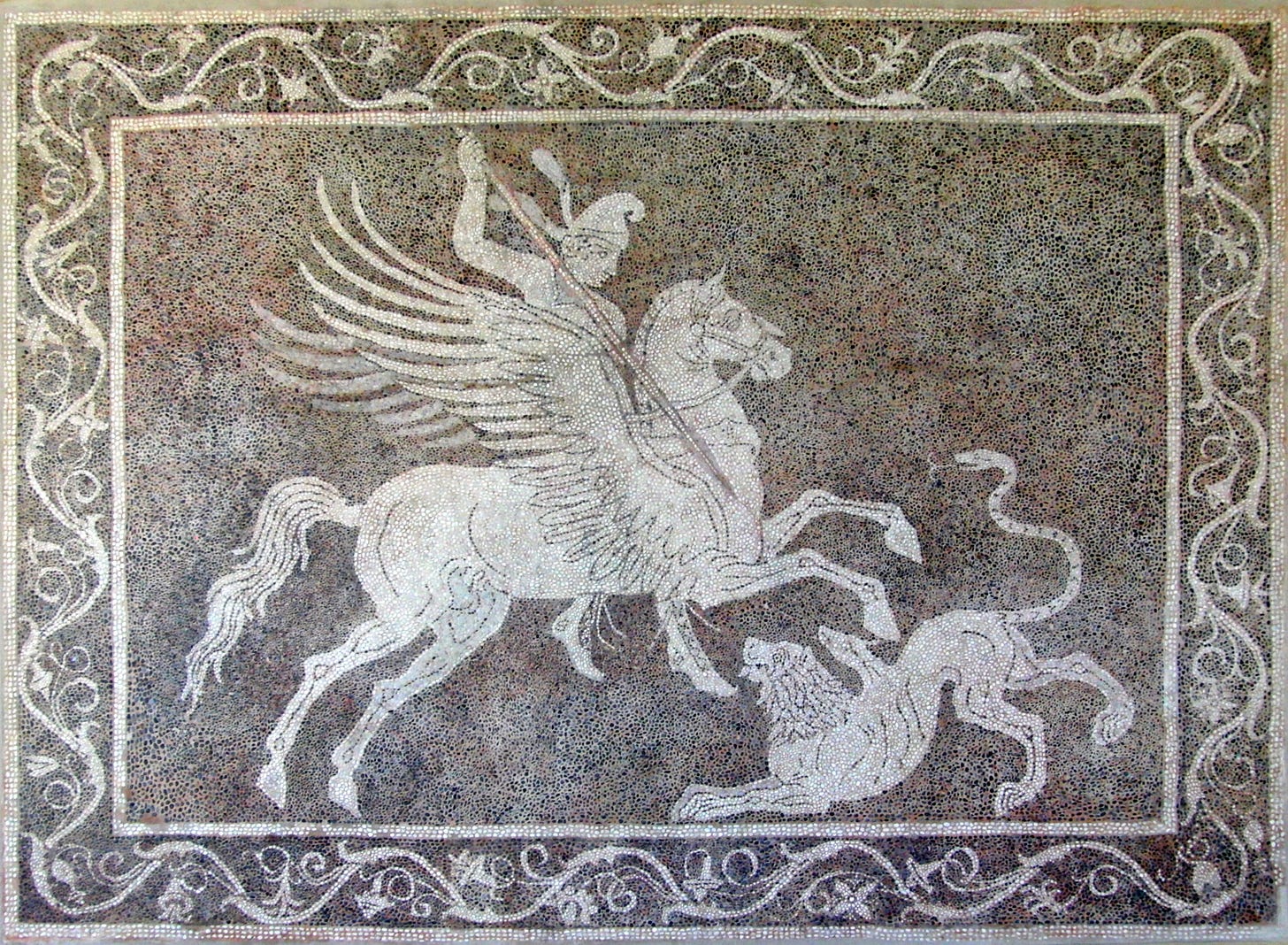
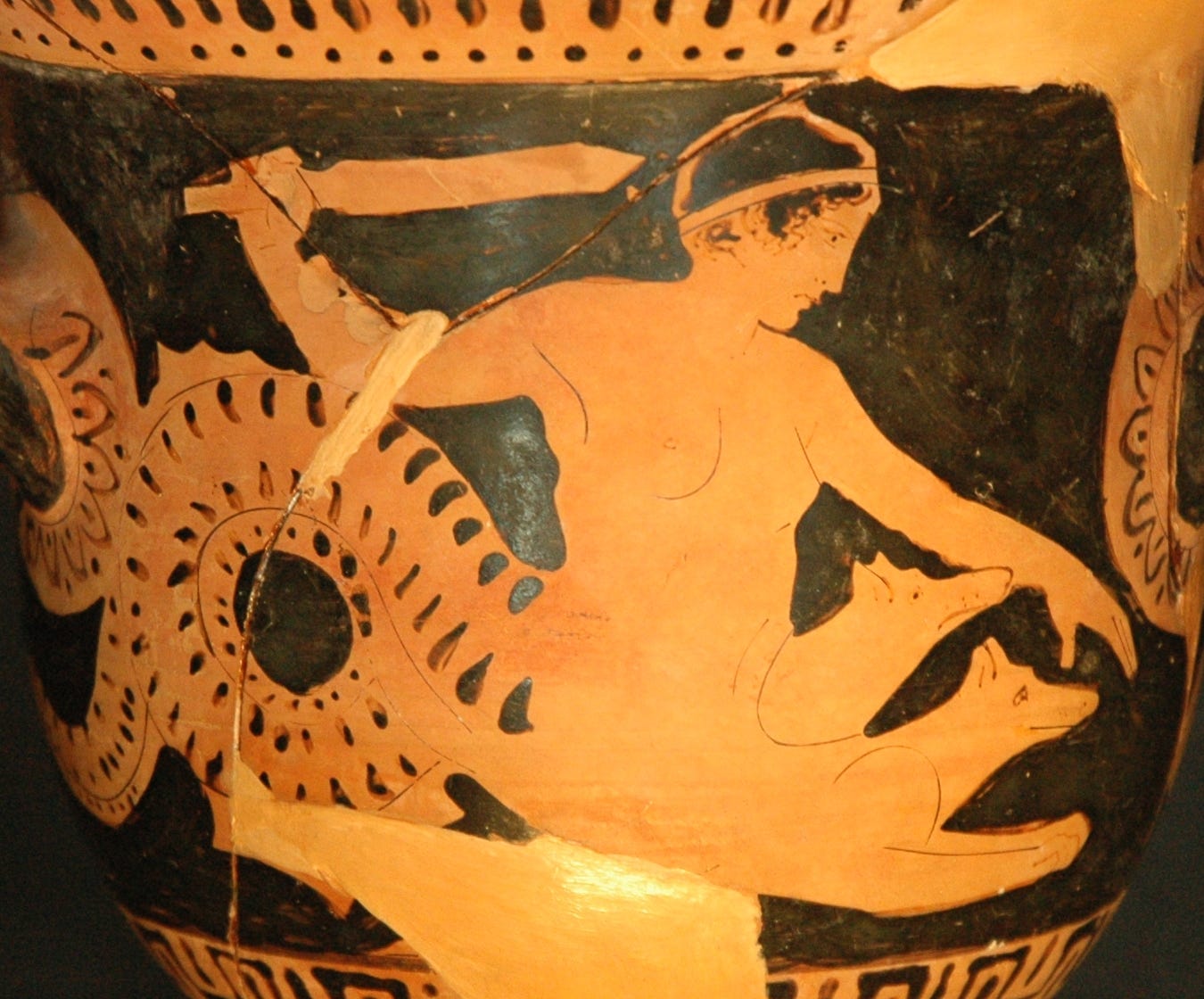
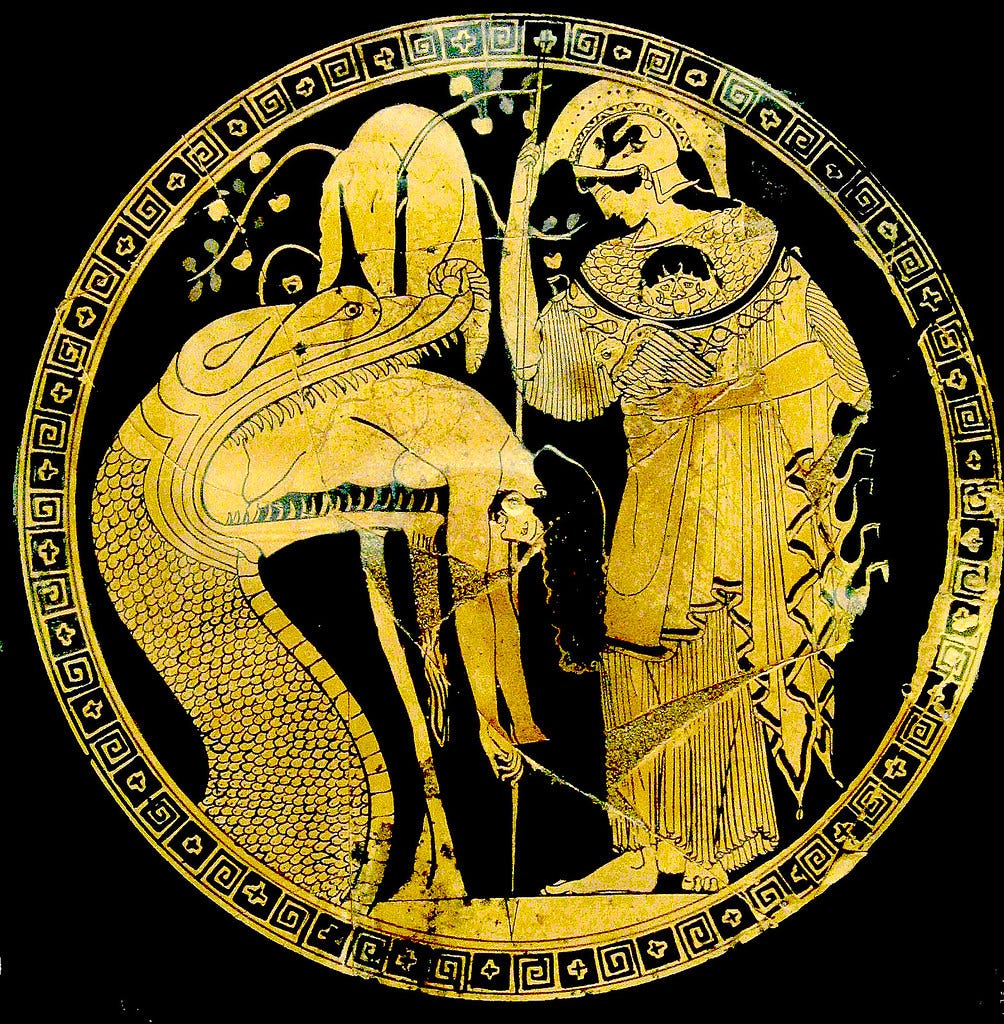
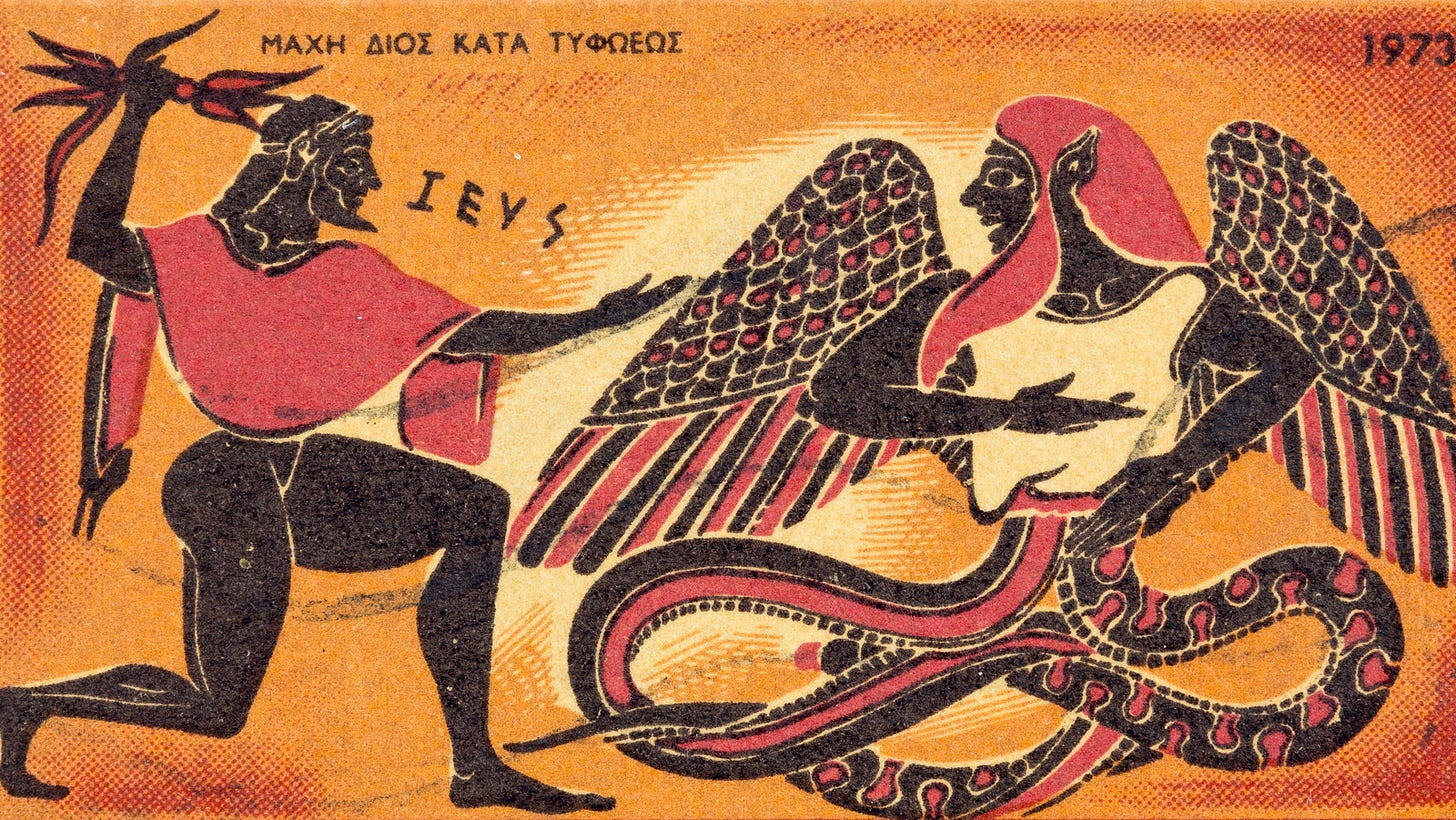
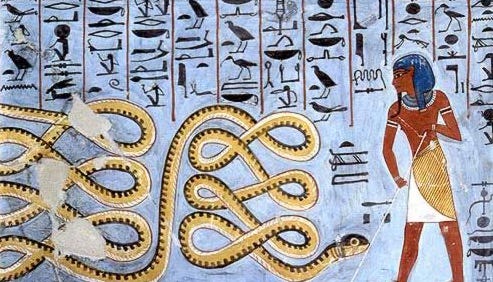
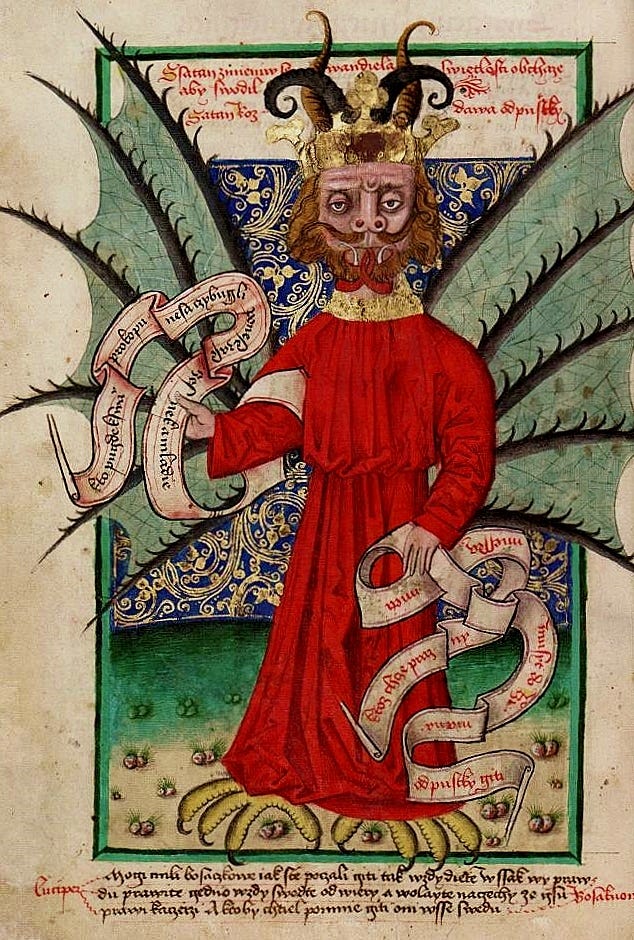

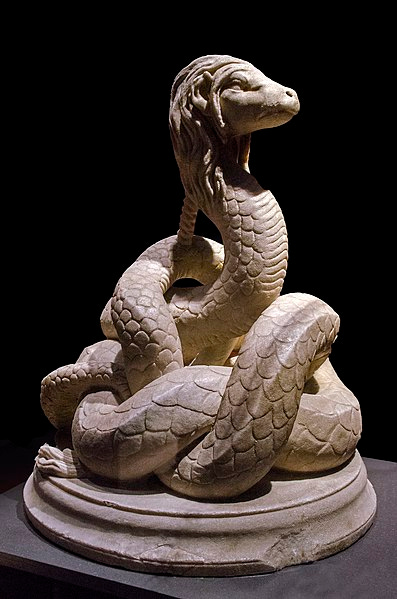
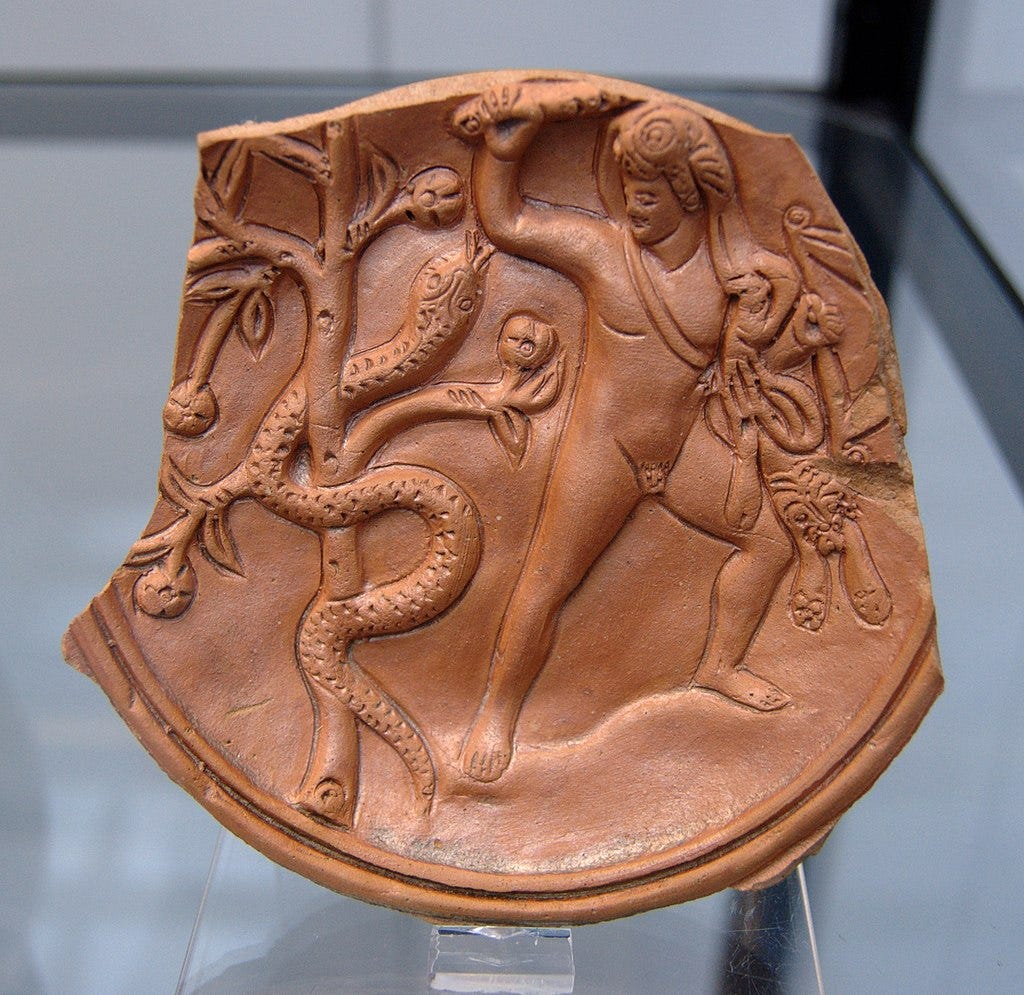


Very interesting!
What fascinated me about this post was the non-intuitive (for me) connection between the snake and the female. Until reading this, I always thought of snakes as phallic (although, admittedly, rather limp). The German word for snake, Schlange, is also slang for penis. But you make an excellent case for snakes representing the female.